As with much popular culture tying down a neat chronology of what developed when and by whom is never easy. Jazz is no exception, it’s a living breathing thing that was and is continually being developed in an organic way by many different musicians. Chronologies and observed evolutions and styles are only discernible after the event and even then it’s a somewhat subjective exercise, open to much debate.
That said below is an overview of the various Jazz styles and chronologies to date.
Origins : Late 1800s- Birth of ‘The Blues’
By 1808 the Atlantic slave trade had brought almost half a million Africans to the United States. The slaves largely came from West Africa and brought strong tribal musical traditions with them. Lavish festivals featuring African dances to drums were organized on Sundays at Congo Square, in New Orleans until 1843; there were similar gatherings in New England and New York. African music was largely functional, for work or ritual, and included work songs and field hollers. The African tradition made use of a single-line melody and call-and-response pattern, but without the European concept of harmony. Rhythms reflected African speech patterns, and the African use of pentatonic scales led to blue notes in blues and jazz.
Blues is the foundation of jazz as well as the prime source of rhythm and blues, rock ‘n’ roll, and country music. The blues is still evolving today.
1890s–1910s
Ragtime
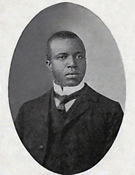
Scott Joplin : Ragtime great
The abolition of slavery led to new opportunities for the education of freed African-Americans. Although strict segregation limited employment opportunities for most blacks, many were able to find work in entertainment. Black musicians were able to provide “low-class” entertainment in dances, minstrel shows, and in vaudeville, by which many marching bands formed. Black pianists played in bars, clubs, and brothels, as ragtime developed.
New Orleans music (Dixieland)
The music of New Orleans had a profound effect on the creation of early jazz. Many early jazz performers played in venues throughout the city; the brothels and bars of the red-light district around Basin Street, called “Storyville”. In addition to dance bands, numerous marching bands played at lavish funerals arranged by the African American and European American community.
Bands would combine the structure of marches with black songs and dances such as the cakewalk. This is essentially “Ragtime”.
Dixieland music, sometimes referred to as Hot jazz, Early Jazz or New Orleans jazz also developed as this time and was spread to Chicago and New York City by New Orleans bands in the 1910s. Well-known jazz standard songs from the Dixieland era, such as “Basin Street Blues” and “When the Saints Go Marching In”, are known even to non-jazz fans.
Scott Joplin – Perhaps the most famous composer of ragtime music, Joplin composed two highly popular pieces, “The Entertainer” and “Maple Leaf Rag.”
Jelly Roll Morton – A prolific performer and outspoken personality, Morton made many recordings and his music is regarded as a bridge between ragtime and early jazz. His most famous pieces are “King Porter Stomp” and “Black Bottom Stomp.”
1920s and 1930s
The Jazz Age
The Jazz Age was a movement that took place during the 1920s or the Roaring Twenties. The movement came about with the introduction of mainstream radio and the end of the First World War. The era is regarded as ending in the 1930s with the beginning of The Great Depression.
Prohibition in the United States (from 1920 to 1933) banned the sale of alcoholic drinks, resulting in illicit speakeasies becoming lively venues of the “Jazz Age”, an era when popular music included current dance songs, novelty songs, and show tunes. As a result Jazz started to get a reputation as being immoral and was seen as a threat to society.
The main centre developing the new “Hot Jazz” was Chicago. During this period notable jazz musicians such as King Oliver, Bill Johnson, Bessie Smith, Bix Beiderbecke, Louis Armstrong, Gershwin and Duke Ellington emerged and developed jazz further, ready for the next big evolution, the development of big band-style swing jazz.
Swing
The 1930s belonged to popular swing big bands, in which some virtuoso soloists became as famous as the band leaders. Key figures in developing the “big” jazz band included bandleaders and arrangers Count Basie, Cab Calloway, Jimmy and Tommy Dorsey, Duke Ellington, Benny Goodman, Fletcher Henderson, Earl Hines, Glenn Miller and Artie Shaw. Trumpeter, bandleader and singer Louis Armstrong was a much-imitated innovator of early jazz.
Swing was also dance music. It was broadcast on the radio ‘live’ nightly across America for many years. Although it was a collective sound, swing also offered individual musicians a chance to ‘solo’ and improvise melodic, thematic solos which could at times be very complex and ‘important’ music. Over time, social strictures regarding racial segregation began to relax in America: white bandleaders began to recruit black musicians and black bandleaders white ones.
1940s and 1950s
Dixieland revival
In the late 1940s there was a revival of “Dixieland” music, harkening back to the original New Orleans style. It was driven in large part by record company reissues of some of the early jazz classics.
Bebop
In the early 1940s bebop performers helped to shift jazz from danceable popular music towards a more challenging “musician’s music.” Differing greatly from swing, early bebop divorced itself from dance music, establishing itself more as an art form but lessening its potential popular and commercial value. Since bebop was meant to be listened to, not danced to, it used faster tempos. This divergence from the jazz mainstream of the time sometimes met hostile response among fans and fellow musicians, especially established swing players, who bristled at the new harmonic sounds. Despite the initial friction, by the 1950s bebop had become an accepted part of the jazz vocabulary. The most influential bebop musicians included saxophonist Charlie Parker, pianists Bud Powell and Thelonious Monk, trumpeters Dizzy Gillespie and Clifford Brown, and drummer Max Roach.
Cool jazz
By the end of the 1940s, the nervous energy and tension of bebop was replaced with a tendency towards calm and smoothness, with the sounds of cool jazz, which favoured long, linear melodic lines. It emerged in New York City, as a result of the mixture of the styles of predominantly white jazz musicians and black bebop musicians, and it dominated jazz in the first half of the 1950s. Proponents of this tyle included the trumpeter Miles Davis, Chet Baker, Dave Brubeck, Bill Evans, Gil Evans, Stan Getz. Cool jazz later became strongly identified with the West Coast jazz scene, but also had a particular resonance in Europe.
Hard bop
Hard bop is an extension of bebop (or “bop”) music that incorporates influences from rhythm and blues, gospel music, and blues, especially in the saxophone and piano playing. Hard bop was developed in the mid-1950s. The hard bop style coalesced in 1953 and 1954, paralleling the rise of rhythm and blues. Miles Davis’ performance of “Walkin’ “, the title track of his album of the same year, at the very first Newport Jazz Festival in 1954, announced the style to the jazz world. The quintet Art Blakey and the Jazz Messengers, fronted by Blakey and featuring pianist Horace Silver and trumpeter Clifford Brown, were leaders in the hard bop movement along with Davis.
Modal jazz
Modal jazz is a development beginning in the later 1950s which takes the mode, or musical scale, as the basis of musical structure and improvisation. Previously, the goal of the soloist was to play a solo that fit into a given chord progression. However, with modal jazz, the soloist creates a melody using one or a small number of modes. The emphasis in this approach shifts from harmony to melody. Innovators in this style include Miles Davis, Jackie McLean, John Coltrane, Bill Evans and Herbie Hancock.
Free jazz
There is no universally accepted definition of free jazz. However Free jazz and the related form of avant-garde jazz can be described as “free tonality” in which meter, beat, and formal symmetry all disappeared, and a range of World music from India, Africa, and Arabia were melded into an intense, even religiously ecstatic or orgiastic style of playing. While loosely inspired by bebop, free jazz tunes gave players much more latitude; the loose harmony and tempo was deemed controversial when this approach was first developed. The bassist Charles Mingus is also frequently associated with the avant-garde in jazz, although his compositions draw from myriad styles and genres. Other proponants of Free Jazz were John Coltrane, Archie Shepp, Sun Ra, Albert Ayler and Pharoah Sanders.
1960s and 1970s
Latin jazz
Latin jazz combines rhythms from African and Latin American countries, often played on instruments such as conga, timbales, guiro, and claves, with jazz and classical harmonies played on typical jazz instruments (piano, double bass, etc.). There are two main varieties: Afro-Cuban jazz was played in the US right after the bebop period, while became more popular in the 1960s. Afro-Cuban jazz began as a movement in the mid-1950s as bebop musicians such as Dizzy Gillespie and Billy Taylor.
Post bop
Post-bop jazz is a form of small-combo jazz derived from earlier bop styles. The genre’s origins lies in work by John Coltrane, Miles Davis, Bill Evans, Charles Mingus, Wayne Shorter and Herbie Hancock. Generally, the term post-bop is taken to mean jazz from the mid-sixties onward that assimilates influence from hard bop, modal jazz, the avant-garde, and free jazz, without necessarily being immediately identifiable as any of the above.
Soul jazz
Soul jazz was a development of hard bop which incorporated strong influences from blues, gospel and rhythm and blues in music for small groups, often the organ trio, which partnered a Hammond organ player with a drummer and a tenor saxophonist. Unlike hard bop, soul jazz generally emphasized repetitive grooves and melodic hooks, and improvisations were often less complex than in other jazz styles. It often had a steadier ‘funk’ style groove, different from the swing rhythms typical of much hard bop. Important soul jazz organists included Jimmy McGriff and Jimmy Smith and Johnny Hammond Smith, and influential tenor saxophone players included Eddie ‘Lockjaw’ Davis and Stanley Turrentine.
Jazz fusion
In the late 1960s and early 1970s the hybrid form of jazz-rock fusion was developed by combining jazz improvisation with rock rhythms, electric instruments and the highly amplified stage sound of rock musicians such as Jimi Hendrix. Until around 1967, the worlds of jazz and rock were nearly completely separate. However as rock became more creative and its musicianship improved, and as some in the jazz world became bored with hard bop and did not want to play strictly avant-garde music, the two different idioms began to trade ideas and occasionally combine forces. Miles Davis made the breakthrough into fusion in 1970s with his album “Bitches Brew”. Although jazz purists protested the blend of jazz and rock, some of jazz’s significant innovators crossed over from the contemporary hard bop scene into fusion. In addition to using the electric instruments of rock, such as the electric guitar, electric bass, electric piano and synthesizer keyboards, fusion also used the powerful amplification, “fuzz” pedals, wah-wah pedals, and other effects used by 1970s-era rock bands. Notable performers of jazz fusion included Miles Davis, keyboardists Joe Zawinul, Chick Corea, Herbie Hancock, vibraphonist Gary Burton, drummer Tony Williams, violinist Jean-Luc Ponty, guitarists Larry Coryell, Al Di Meola, John McLaughlin and Frank Zappa, saxophonist Wayne Shorter and bassists Jaco Pastorius and Stanley Clarke.
Jazz funk
Developed by the mid-1970s, Jazz Funk is characterized by a strong back beat (groove), electrified sounds, and often, the presence of the first electronic analog synthesizers. The integration of Funk, Soul and R&B music and styles into jazz resulted in the creation of a genre whose spectrum quite wide and ranges from strong jazz improvisation to soul, funk or disco with jazz arrangements, jazz riffs and jazz solos, and sometimes soul vocals.
1980s–2010s
Smooth jazz
In the early 1980s, a commercial form of jazz fusion called pop fusion or “smooth jazz” became successful and gained significant radio airplay. Smooth jazz saxophonists include Grover Washington, Jr., Kenny G, Kirk Whalum, Boney James and David Sanborn. Vocalists including Al Jarreau, Anita Baker, Chaka Khan and Sade.
In general, smooth jazz is downtempo (the most widely played tracks are in the 90–105 BPM range), layering a lead, melody-playing instrument (saxophones–especially soprano and tenor–are the most popular, with legato electric guitar playing a close second) over a backdrop that typically consists of programmed electronic drum rhythms, synth pads and samples
Acid jazz, nu jazz and jazz rap
Acid jazz developed in the UK over the 1980s and 1990s and influenced by jazz-funk and electronic dance music. Jazz-funk musicians such as Roy Ayers and Donald Byrd are often credited as forerunners of acid jazz. Nu jazz is influenced by jazz harmony and melodies, there are usually no improvisational aspects. It ranges from combining live instrumentation with beats of jazz house.
Jazz rap developed in the late 1980s and early 1990s, and incorporates jazz influence into hip hop. Often older jazz stabdards are sampled in to the Jazz rap, artists such as Dizzy Gillespie, Charlie Parker and Ramsey Lewis.
Punk jazz and jazzcore
In the post-punk era in London, there began a mix of free jazz, along with dub reggae, and punk rock. Examples of this style include Lydia Lunch’s Queen of Siam, the work of James Chance and the Contortions, who mixed Soul with free jazz and punk. Gray and the Lounge Lizards were the first group to call themselves “punk jazz”.
Jazzcore, is a development and fusion of free jazz with hardcore punk.
In the 1990s, punk jazz and jazzcore began to reflect the increasing awareness of elements of extreme metal (particularly thrash metal and death metal) in hardcore punk. A new style of “metallic jazzcore” was developed
M-Base
The M-Base movement was started in the 1980s by a loose collective of young African-American musicians (Steve Coleman, Graham Haynes, Cassandra Wilson, Geri Allen and Greg Osby) who emerged in New York with a new sound and specific ideas about creative expression. With a strong foothold as well as in the tradition represented by Charlie Parker and John Coltrane as in contemporary African-American groove music and with a high degree of musical skills, the saxophonists Steve Coleman, Greg Osby, and Gary Thomas developed unique and complex, nevertheless grooving musical languages.
Steve Coleman explained the substantial elements of the concept as:
- improvisation and structure
- contemporary relevance
- music as expression of life experience
- growth through creativity and philosophical broadening
- use of non-western concepts
Etymology of the word 'Jazz'
As with many other words that began in slang, the exact origin of the word jazz is not known for certain
Likely derivation from jasm
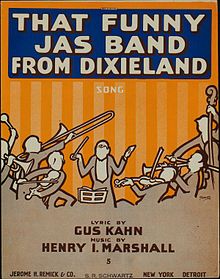
1916 Sheet Music Cover
The most likely derivation is from the word ‘jasm’, a now-obsolete slang term meaning spirit, energy, vigor and dated to 1860. A link between the two words is particularly supported by the Daily Californian’s February 18, 1916, article, which used the spelling jaz-m, although the context and other articles in the Daily Californian from this period show that jazz was intended.
Jasm is thought to derive from or be a variant of slang jism or gism, which dates to 1842 and defines as “spirit; energy; spunk.” Jism also means semen or sperm, the meaning that predominates today, causing jism to be considered a taboo word. In the 19th and early 20th centuries, however, jism could still be used in polite contexts. Jism, or its variant jizz, has also been suggested as a direct source for jazz.
Other possible derivations
Other proposed origins include French jaser, meaning to chatter or chat, and French chasser, meaning to chase or hunt. Daniel Cassidy, a film-maker, musician, and writer, has argued for a derivation from Irish teas, which is pronounced “jass” and means “heat” or “passion”. Although they cannot be ruled out absolutely, such derivations lack empirical supporting evidence and must be considered speculative.

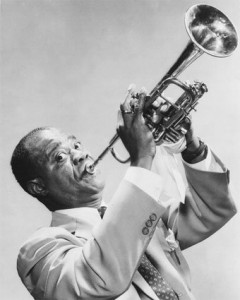
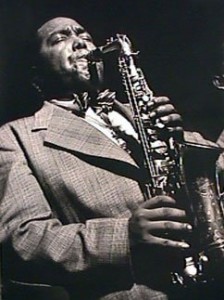
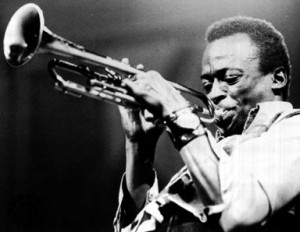
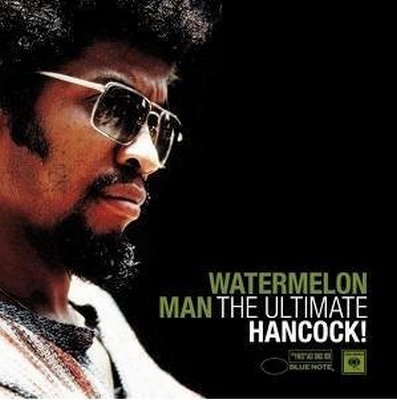

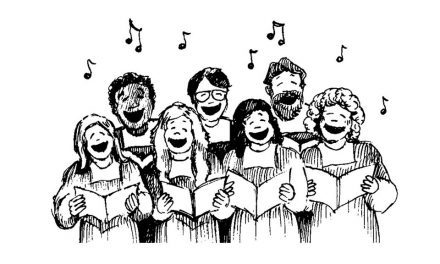

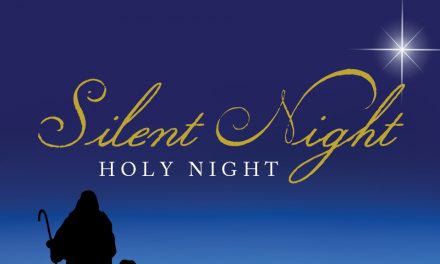
You must be logged in to post a comment.